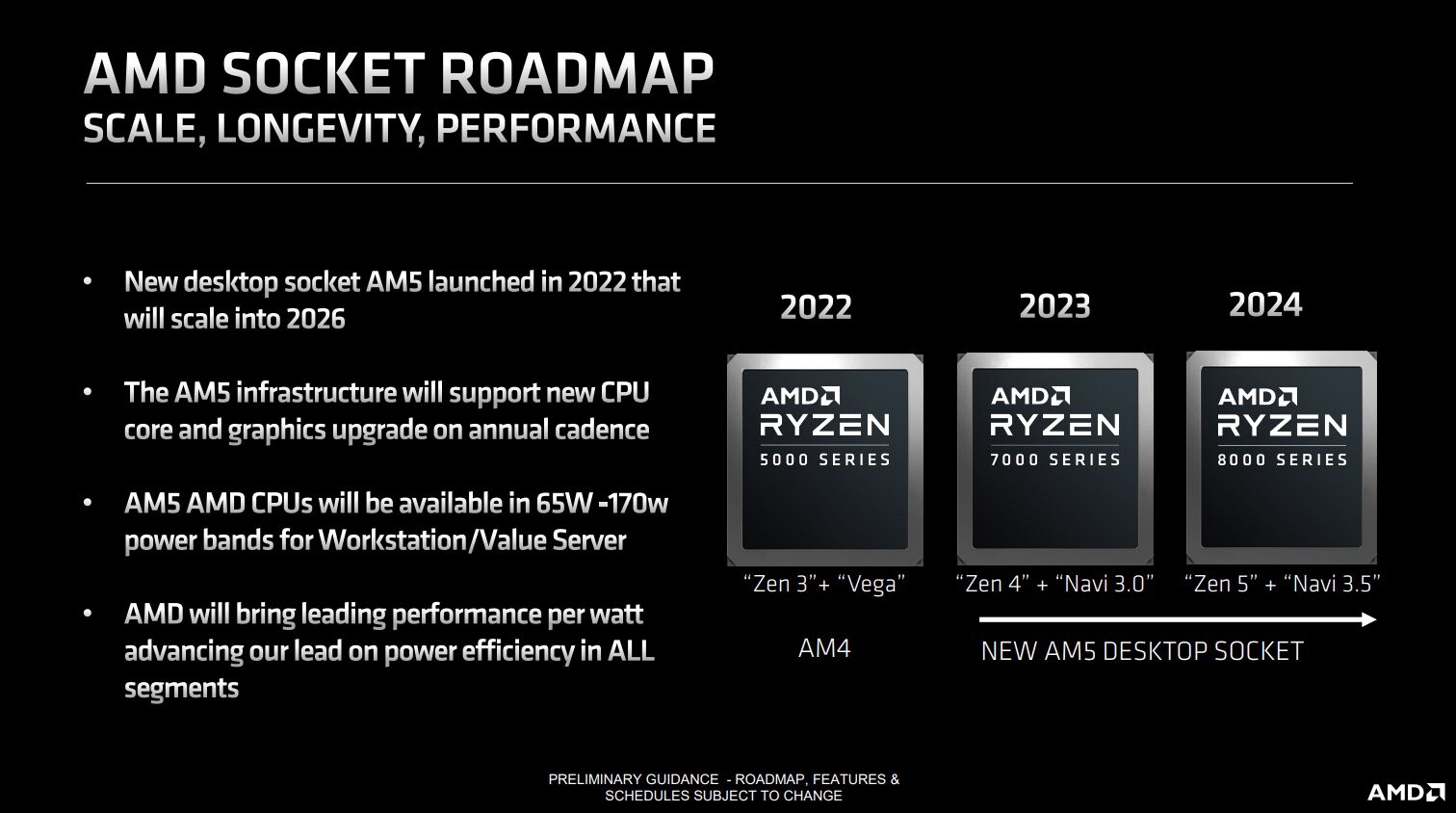During one of its Meet the Experts presentations to retail channel vendors, AMD confirmed that its next-generation "Zen 5" architecture will see its desktop part branded under the Ryzen 8000 series. The company has a history of skipping a thousand-number sequence each generation for its mainstream-desktop series, such as the Ryzen 4000 series nomenclature between the "Zen 2" based Ryzen 3000 "Vermeer" and "Zen 3" based Ryzen 5000 Vermeer, and more recently, between "Vermeer" and the "Zen 4" based Ryzen 7000 "Raphael." AMD's next-generation mainstream-desktop processor is expected to be codenamed "Granite Ridge," and it will feature up to 16 "Zen 5" CPU cores across up to two CCDs. The processor I/O (and its 6 nm cIOD) is expected to be largely carried over, except that it could be upgraded with support for higher DDR5 memory speeds.
Another major disclosure is the first mention of "Navi 3.5," which implies an incremental update to the "Navi 3.0" generation (Radeon RX 7000 series, RDNA3 graphics architecture). This update could even be a series-wide die-shrink to a new foundry node such as TSMC 4 nm or even 3 nm, which would provide headroom to dial up clock speeds. AMD's current GPU product stack is in a bit of a mess, with the "Navi 31" able to compete with NVIDIA's high-end SKUs such as the RTX 4080, and the company expected to release a slightly faster RX 7950 series to have a shot at the RTX 4090. However, the company's performance-segment and mid-range GPUs may have missed their performance targets to prove competitive against NVIDIA's AD104-based RTX 4070 series and AD106-based RTX 4060 series. The recently announced RX 7600 is based on older 6 nm foundry tech and performs a segment lower than the RTX 4060 Ti.
